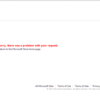
Microsoft Windows President Steven Sinoksky OR is this Bruce Willis?
The next version of Windows will run full-sized desktop applications on low-power ARM-based tablets. However, the only desktop applications approved to appear on ARM devices will be those designed by Microsoft such as Internet Explorer 10, Office, and the Windows file explorer. Affectionately known as WOA (Windows On Arm), it includes desktop versions of Microsoft Word, Excel, PowerPoint, and OneNote.
In an lengthy blog post, Microsoft's Steven Sinofsky, president of the Windows division explained how WOA will work. In a nutshell, you can think of WOA as a specialized version of Windows 8 designed for ARM processors. There will be two new versions of Windows 8 for PCs and tablets - one for high-performance Intel/AMD processors and the other for lower performance but ultra-lower power ARM processors. The advantage of ARM is that tablets will have much longer batter life.
This isn't to say you won't be able to get apps installed on ARM-powered devices. Microsoft will duplicate Apple's App Store model with Windows on ARM, forcing application distribution exclusively through the Windows Store. So you won't be able to sideload / install your own apps directly. Sinofsky explained the reasoning as follows:
If we enabled the broad porting of existing code we would fail to deliver on our commitment to longer battery life, predictable performance, and especially a reliable experience over time. The conventions used by today’s Windows apps do not necessarily provide this, whether it is background processes, polling loops, timers, system hooks, startup programs, registry changes, kernel mode code, admin rights, unsigned drivers, add-ins, or a host of other common techniques. By avoiding these constructs, WOA can deliver on a new level of customer satisfaction: your WOA PC will continue to perform well over time as apps are isolated from the system and each other, and you will remain in control of what additional software is running on your behalf, all while letting the capabilities of diverse hardware shine through.
Trying to get around this via virtualization won't work either, as Sinofsky said that won't be allowed. Microsoft also did an about face and isn't allowing third-party plugins for Internet Explorer on ARM - so no Flash support. 
Sinofsky explained, "If you need to run existing x86/64 software, then you will be best served with Windows 8 on x86/64. If you’re already considering a non-Windows device, then we think WOA will be an even better alternative when you consider the potential of form factors, peripherals, Windows Store apps (and developer platform), and Office applications as well as a broad set of intrinsic Windows capabilities."
Fair enough. I'd personally go with a x86/64 tablet to have the full desktop capabilities, but I understand the need for a tablet with longer battery life.
Exit question - Why is Bruce Willis (photo top) demoing the latest Windows 8 hardware? 













